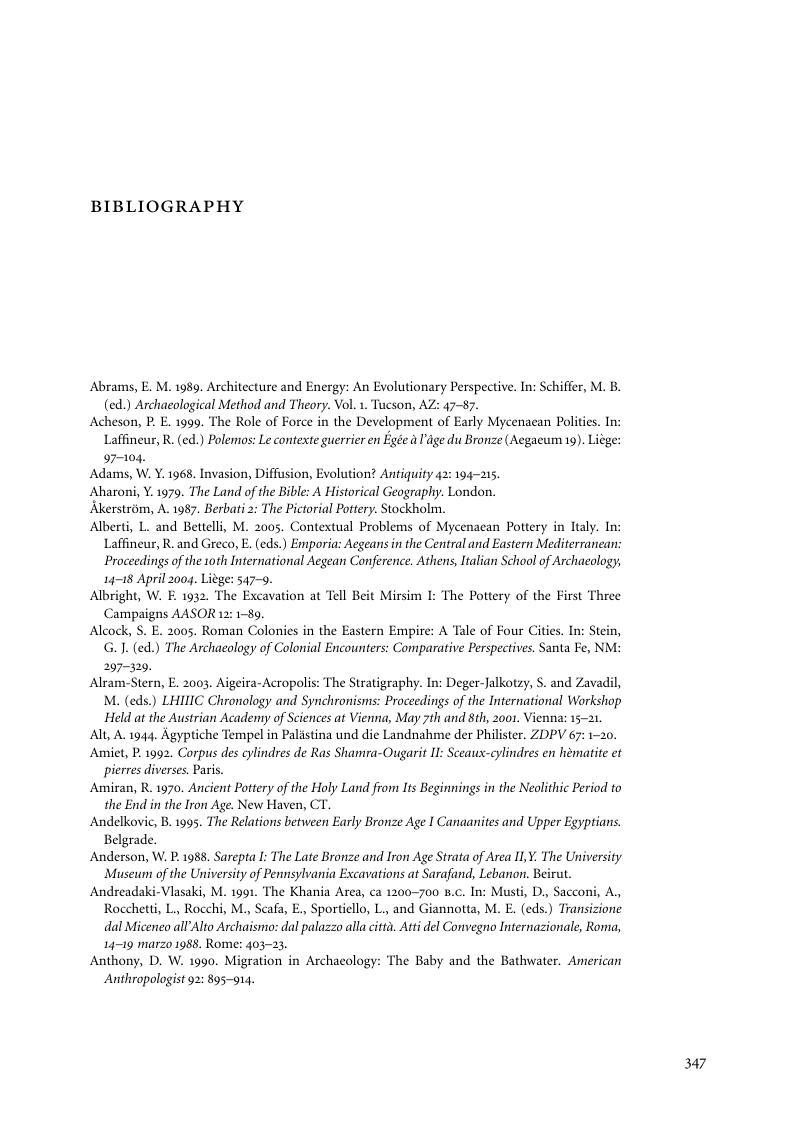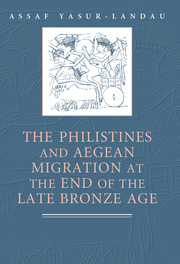Book contents
- Frontmatter
- Contents
- Acknowledgments
- INTRODUCTION
- 1 THE ARCHAEOLOGICAL IDENTIFICATION OF MIGRATION AND OTHER RANGES OF INTERREGIONAL INTERACTIONS
- 2 SETTING THE SCENE: THE MYCENAEAN PALATIAL CULTURE AND THE OUTSIDE WORLD
- 3 THE TWELFTH-CENTURY-BCE AEGEAN: POLITICAL AND SOCIAL BACKGROUND
- 4 PRECONDITIONS FOR MIGRATION
- 5 ALONG THE ROUTES
- 6 STRICTLY BUSINESS? THE SOUTHERN LEVANT AND THE AEGEAN IN THE THIRTEENTH TO THE EARLY TWELFTH CENTURY BCE
- 7 THE MATERIAL CULTURE CHANGE IN TWELFTH-CENTURY PHILISTIA
- 8 THE PHILISTINE SOCIETY AND THE SETTLEMENT PROCESS
- 9 A SHORT HISTORY OF THE AEGEAN IMMIGRATION TO THE LEVANT
- Bibliography
- Index
- References
Bibliography
Published online by Cambridge University Press: 04 August 2010
- Frontmatter
- Contents
- Acknowledgments
- INTRODUCTION
- 1 THE ARCHAEOLOGICAL IDENTIFICATION OF MIGRATION AND OTHER RANGES OF INTERREGIONAL INTERACTIONS
- 2 SETTING THE SCENE: THE MYCENAEAN PALATIAL CULTURE AND THE OUTSIDE WORLD
- 3 THE TWELFTH-CENTURY-BCE AEGEAN: POLITICAL AND SOCIAL BACKGROUND
- 4 PRECONDITIONS FOR MIGRATION
- 5 ALONG THE ROUTES
- 6 STRICTLY BUSINESS? THE SOUTHERN LEVANT AND THE AEGEAN IN THE THIRTEENTH TO THE EARLY TWELFTH CENTURY BCE
- 7 THE MATERIAL CULTURE CHANGE IN TWELFTH-CENTURY PHILISTIA
- 8 THE PHILISTINE SOCIETY AND THE SETTLEMENT PROCESS
- 9 A SHORT HISTORY OF THE AEGEAN IMMIGRATION TO THE LEVANT
- Bibliography
- Index
- References
Summary

- Type
- Chapter
- Information
- Publisher: Cambridge University PressPrint publication year: 2010



